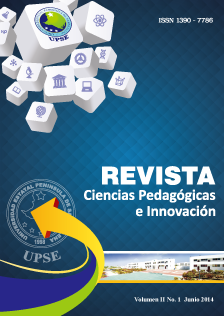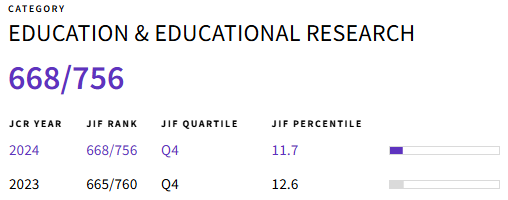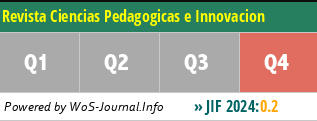A new approach to the study of lithic tools of ancient “Las Vegas” culture. Santa Elena Ecuador
DOI:
https://doi.org/10.26423/rcpi.v2i1.41Keywords:
Las Vegas Culture, lithic technology, early holoceneAbstract
The history of the study of the Las Vegas culture illustrates an aspect of the scientific process: it is ad- visable to review repeatedly the interpretation of archaeological evidence because the development of more advanced techniques of analysis result in better interpretations of the past. Several examples of scientific progress in Ecuadorian archaeology are presented, but this study focuses on the lithic techno- logy of the Las Vegas culture known from evidence recovered from habitation sites located on the Santa Elena Peninsula that were occupied during the Early Holocene. We summarize the manufacture of Vegas tools based on their morphology, but we emphasize an innovative program of systematic micros- copic observation that has resulted in the inference of the functions of ancient tools. This interpretation is based on the identification of patterns of use wear or damage (microscopic striations and zones of polish) that appear on the edges of the lithic flakes manufactured by Vegas people. It is suggested that one lithic flake functioned to work bone or deer antler, while another was used to process dry animal hide. The next step in this investigation is to replicate some Vegas flake tools using local stone material in Santa Elena. Then it will be necessary to undertake experimental activities (like cutting and scraping a variety of materials such as vegetable fibers and animal flesh and bones) in order to produce use wear patterns on the duplicate tools that correspond to known activities. By comparing the experimental tools with ancient Vegas tools, it will be possible to infer more precisely the activities performed by the ancient inhabitants of the coast of Ecuador.
Downloads
References
Lanning, EP. Pleistocene man in South America. World Archaeology 1970; 2(1):90-111.
Stothert KE. Review of the early preceramic complexes of the Santa Elena Peninsula, Ecuador. American Antiquity 1983; 48(1):122-127.
Stothert KE. La prehistoria temprana de la península de Santa Elena, Ecuador Cultura Las Vegas. Con contribuciones de T. Chase, D. Piperno, D. Ubelaker, E. Wing. Miscelánea Antropológica Ecuatoriana. Serie Monográfica 1988; 10. Guaya - quil: Museos del Banco Central del Ecuador.
Ubelaker, D.H. 1988 Restos de esqueletos humanos del sitio OGSE-80. En Stothert 1988:105- 132.
Stothert KE. En: Stothert KE, editor. La prehistoria temprana de la península de Santa Elena. Guayaquil. Miscelánea Antropológica Ecuatoriana, Serie Monográfica 10, 1988. Capítulo VI, Patrones de entierros. Museo del Banco Central del Ecuador 1988; 133-169.
Chase, T. Restos fáunicos. En: Stothert KE, editor. La prehistoria temprana de la península de Santa Elena. Guayaquil: Miscelánea Antropológica Ecuatoriana, Serie Monográfica 10. Museos del Banco Central del Ecuador; 1988. Capítulo VII; p. 171-178.
Wing, E. S. 1988 Dusicyon sechurae en contextos arqueológicos tempranos. En Stothert 988:179-198).
Piperno, DR. Primer informe sobre los fitolitos de las plantas del OGSE-80 y la evidencia del cultivo de maíz en el Ecuador. En: Stothert KE, editor. La prehistoria temprana de la península de Santa Elena. Guayaquil: Miscelánea Antropológica Ecuatoriana, Serie Monográfica 10. Museos del Banco Central del Ecuador; 1988. 1988:203- 213.
Piperno D, Andres T, Stothert K. Phytoliths in Cucurbita and other Neotropical Cucurbitaceae and their Occurrence in early archaeological sites from the Lowland American Tropics. Journal of Archaeological Science; 2003; 27:193-208.
Piperno D, Pearsall D. The origins of agriculture in the Lowland Neotropics. Academia Press, San Diego, California.
Piperno DR, Stothert K. Phytolith evidence for Early Holocene Cucurbita domestication in southwest Ecuador. Science; 2003 feb 14; 299:1054- 1057.
Stothert, K.E. y D. Piperno, 2000 La cultura Las Vegas de los Amantes de Sumpa y el contexto del origen del cultivo de plantas domesticadas. Miscelánea Antropológica Ecuatoriana 9:51-72.
Stothert, K.E., D.R. Piperno, y T. Andres, 2003 Terminal Pleistocene/Early Holocene human adaptations in coastal Ecuador: the Las Vegas evidence. Quaternary International 109-111:23-43.
Stothert, K.E. y A. Sánchez Mosquera, 2012. Culturas del Pleistoceno Final y el Holoceno Temprano en el Ecuador. Tradiciones andinas tempranas: cultura, tecnología y medioambiente (P. Kaulicke y T. D. Dillehay, editores):81-120. Boletín de Arqueología PUCP 15. Lima, Perú
Gunchinsuren B., Gladyshev S., Tabarev A., Kanomata Y., Khatsenovich A. Use-Wear Analysis on Palaeolithic Artifacts of Northern Mongolia. Bulletin of Tohoku University Museum 2013; 12:8-24.
Tabarev, A.V. 2007 The South American Archaeology in the Russian Historiography. Inter - national Journal of South American Archaeology. N.1: 6-12.
Stothert KE. The Preceramic Las Vegas Culture of Coastal Ecuador. American Antiquity 1985; 50: 613-637.
Stothert KE. Trekking the Shore. Changing Coastlines and the Antiquity of Coastal Settlement. New York: Springer 2011. Capítulo Coastal Recourses and the Early Holocene Las Vegas Adaptation of Ecuador.; p.355-383.
Keeley, LH. Experimental Determination of stone tool Uses. Chicago:University of Chicago Press; 1980.
Temme, M. 1982 Excavaciones en el sitio precerámico de Cubilán, Ecuador. Miscelánea Antropológica Ecuatoriana 2:135-164.
Cubilán. Dos Estaciones Precerámicas en el Curso Superior del Río San Felipe de Oña (Provincias: Loja y Azuay-Ecuador). Loja, Ecuador: Editorial Universidad Técnica Particular de Loja-Ecuador.
Downloads
Published
Issue
Section
License
El titular de los derechos de autor de la obra, otorga derechos de uso a los lectores mediante la licencia Creative Commons Atribución-NoComercial-CompartirIgual 4.0 Internacional. Esto permite el acceso gratuito inmediato a la obra y permite a cualquier usuario leer, descargar, copiar, distribuir, imprimir, buscar o vincular a los textos completos de los artículos, rastrearlos para su indexación, pasarlos como datos al software o usarlos para cualquier otro propósito legal.
Cuando la obra es aprobada y aceptada para su publicación, los autores conservan los derechos de autor sin restricciones, cediendo únicamente los derechos de reproducción, distribución para su explotación en formato de papel, así como en cualquier otro soporte magnético, óptico y digital.

















